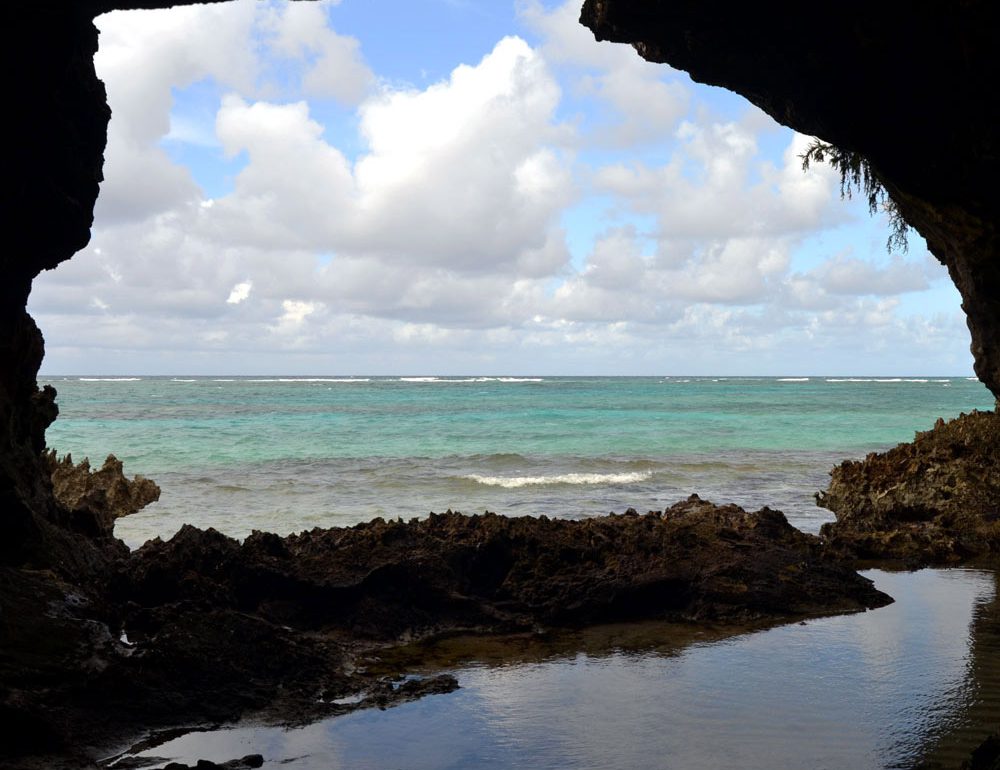Report on the Perception of Forest Biodiversity and its Implications for Sustainable Development Goals
Introduction and Background
A study published in People and Nature provides critical insights into the human perception of biodiversity, directly informing strategies for achieving key Sustainable Development Goals (SDGs). The research, conducted by an interdisciplinary team from German scientific institutions, investigated whether biodiversity is more accurately perceived through sight or sound. The findings have significant implications for SDG 15 (Life on Land), by exploring how public perception can be leveraged for conservation, and for SDG 3 (Good Health and Well-being) and SDG 11 (Sustainable Cities and Communities), by linking perceived natural richness to human well-being and urban design.
Methodology
The research employed an experimental, lab-based study to assess how individuals perceive varying levels of forest biodiversity. The methodology involved:
- Two groups of 48 participants each.
- One group was presented with photographs of forests with different levels of biodiversity.
- The second group was presented with audio recordings from the same forests.
- Participants were tasked with sorting the images or sounds based on their perceived level of biodiversity.
Key Findings
The study concluded that both visual and acoustic cues inform the perception of biodiversity, with human assessment aligning closely with actual ecological measurements. This suggests a strong innate ability to recognize ecosystem richness, a crucial factor for engaging the public in support of SDG 15 (Life on Land).
- Acoustic Perception: Participants were slightly more accurate when assessing forest biodiversity through sound alone. Perceived acoustic diversity was primarily influenced by:
- The presence and melody of birdsong.
- The overall volume and perceived seasonal characteristics of the soundscape.
- Visual Perception: The perception of visual diversity was predominantly linked to tangible structural elements. Key factors included:
- Variations in color and light conditions.
- Vegetation density and overall forest structure.
Implications for Sustainable Development Goals
The research findings offer actionable guidance for integrating human sensory experience into environmental policy and urban planning, directly supporting the achievement of multiple SDGs.
SDG 15: Life on Land
- The study confirms that people can perceive biodiversity, providing a foundation for public education and engagement in conservation initiatives.
- To enhance public support for conservation, efforts should focus on making biodiversity perceptible. This includes managing habitats to foster visually varied vegetation and rich, melodic soundscapes, particularly diverse bird calls.
SDG 11: Sustainable Cities and Communities
- The findings provide a blueprint for designing urban green spaces that are not only rich in species but are also perceived as such by residents.
- Urban planning and greening efforts should consider multi-sensory experiences to strengthen the connection between urban populations and nature.
- Incorporating visually complex structures and habitats that support audible wildlife can make urban nature more engaging and valued.
SDG 3: Good Health and Well-being
- The study reinforces previous findings that perceived biodiversity, rather than actual species counts alone, is linked to improved mental health outcomes.
- By designing urban environments in line with SDG 11 to be rich in perceptible visual and acoustic biodiversity, cities can actively promote the well-being of their inhabitants.
Conclusion
This research demonstrates that human perception of biodiversity is a nuanced process influenced by both sight and sound. These insights are vital for designing environments and conservation strategies that resonate with the public. By making biodiversity more perceptible, policymakers and planners can foster a stronger human-nature connection, which is essential for advancing the interconnected goals of protecting life on land (SDG 15), building sustainable communities (SDG 11), and promoting good health and well-being (SDG 3). The researchers acknowledge that further studies with broader demographic representation are needed to build upon these findings.
1. Which SDGs are addressed or connected to the issues highlighted in the article?
SDG 3: Good Health and Well-being
- The article directly connects the perception of biodiversity with human well-being. It references a previous study showing that “perceived biodiversity, rather than actual tree species richness, was associated with short-term mental health and well-being outcomes.” It further suggests that designing environments to be rich in perceptible biodiversity can support well-being.
SDG 11: Sustainable Cities and Communities
- The research findings are applied to urban contexts. The article states that the knowledge “could inform designing and planning environments” and that “effective conservation and urban greening efforts should also consider how biodiversity is experienced.” It explicitly mentions the goal of “designing urban environments rich in both visual and acoustic biodiversity” to enhance human connection to nature.
SDG 15: Life on Land
- The core subject of the study is forest biodiversity. The research explores how people perceive biodiversity, which is crucial for garnering public support for conservation. The article notes that enhancing public connection to nature through sensory experiences can “support broader conservation goals” related to protecting terrestrial ecosystems.
2. What specific targets under those SDGs can be identified based on the article’s content?
SDG 3: Good Health and Well-being
- Target 3.4: By 2030, reduce by one third premature mortality from non-communicable diseases through prevention and treatment and promote mental health and well-being. The article supports this target by identifying a method to promote well-being. It states that “designing urban environments… could enhance human connections to nature, supporting both conservation and well-being,” directly linking environmental design with mental health promotion.
SDG 11: Sustainable Cities and Communities
- Target 11.7: By 2030, provide universal access to safe, inclusive and accessible, green and public spaces, in particular for women and children, older persons and persons with disabilities. The article adds a qualitative dimension to this target. It suggests that for green spaces to be truly beneficial, their biodiversity must be perceptible, advocating for designs that “incorporating habitat elements that foster more diverse bird calls or visually varied vegetation.”
SDG 15: Life on Land
- Target 15.5: Take urgent and significant action to reduce the degradation of natural habitats, halt the loss of biodiversity and, by 2020, protect and prevent the extinction of threatened species. The study contributes to this target by exploring how public perception can aid conservation. By understanding what people perceive as biodiverse, conservation efforts can be designed to be more engaging and effective, thus fostering public support to “halt the loss of biodiversity.”
- Target 15.9: By 2020, integrate ecosystem and biodiversity values into national and local planning, development processes, poverty reduction strategies and accounts. The article’s conclusion that findings “could inform designing and planning environments that both support species richness and make that richness perceptible to people” directly aligns with integrating biodiversity values into local (urban) planning.
3. Are there any indicators mentioned or implied in the article that can be used to measure progress towards the identified targets?
SDG 3: Good Health and Well-being
- Implied Indicator: Association between perceived biodiversity and self-reported mental well-being. The article explicitly mentions that “perceived biodiversity… was associated with short-term mental health and well-being outcomes,” implying that measuring these outcomes in populations with access to sensorially rich green spaces can be an indicator of progress.
SDG 11: Sustainable Cities and Communities
- Implied Indicator: Perceptibility of visual and acoustic biodiversity in urban green spaces. The article suggests moving beyond simply measuring the area of green space to assessing its quality. Progress could be measured by the presence of “diverse bird calls or visually varied vegetation,” which the study found to be key elements of perceived biodiversity.
SDG 15: Life on Land
- Implied Indicator: Public perception of biodiversity levels. The entire study is based on this concept. The article states, “participants categorised the images or sounds based on the amount of diversity they perceived.” This perceptual accuracy, when compared to objective measures like “actual tree species richness,” can serve as an indicator of public awareness and connection to biodiversity.
- Implied Indicator: Objective measures of sensory diversity. The study identifies specific elements that can be measured as indicators of a healthy ecosystem that is also perceptible to humans. These include “variations in forest density and structure, light conditions and colours” for visual diversity, and the melodic quality and volume of “birdsongs” for acoustic diversity.
4. Table of SDGs, Targets, and Indicators
| SDGs | Targets | Indicators Identified in Article |
|---|---|---|
| SDG 3: Good Health and Well-being | 3.4: Promote mental health and well-being. | Association between perceived biodiversity and self-reported mental health and well-being outcomes. |
| SDG 11: Sustainable Cities and Communities | 11.7: Provide universal access to safe, inclusive and accessible, green and public spaces. | Perceptibility of visual and acoustic biodiversity in urban green spaces (e.g., presence of diverse bird calls, visually varied vegetation). |
| SDG 15: Life on Land | 15.5: Halt the loss of biodiversity. | Public perception of biodiversity levels (visual and acoustic) compared against objective measures. |
| 15.9: Integrate ecosystem and biodiversity values into national and local planning. | Objective measures of sensory diversity (e.g., variations in forest structure, colours, birdsong characteristics). |
Source: eurekalert.org







